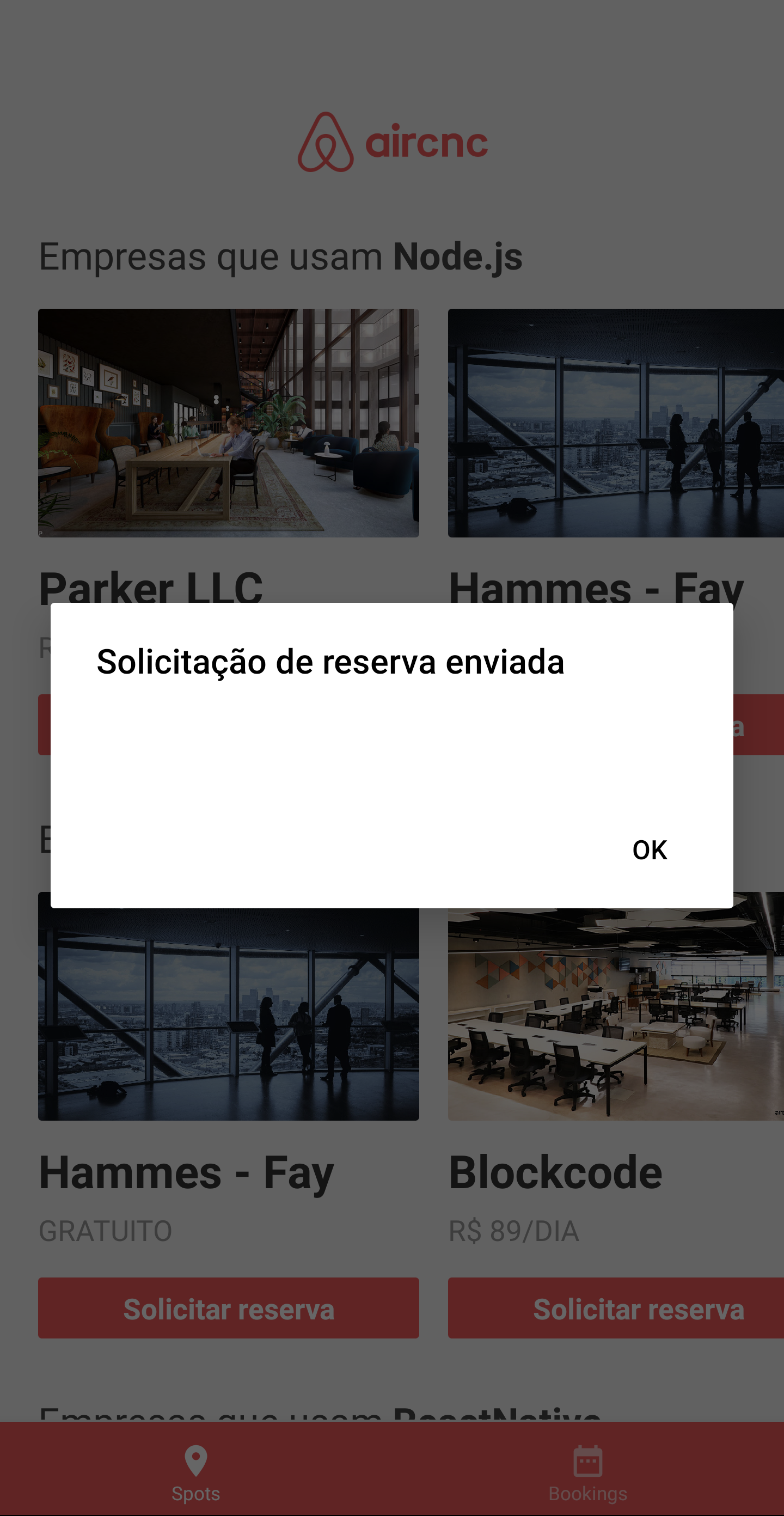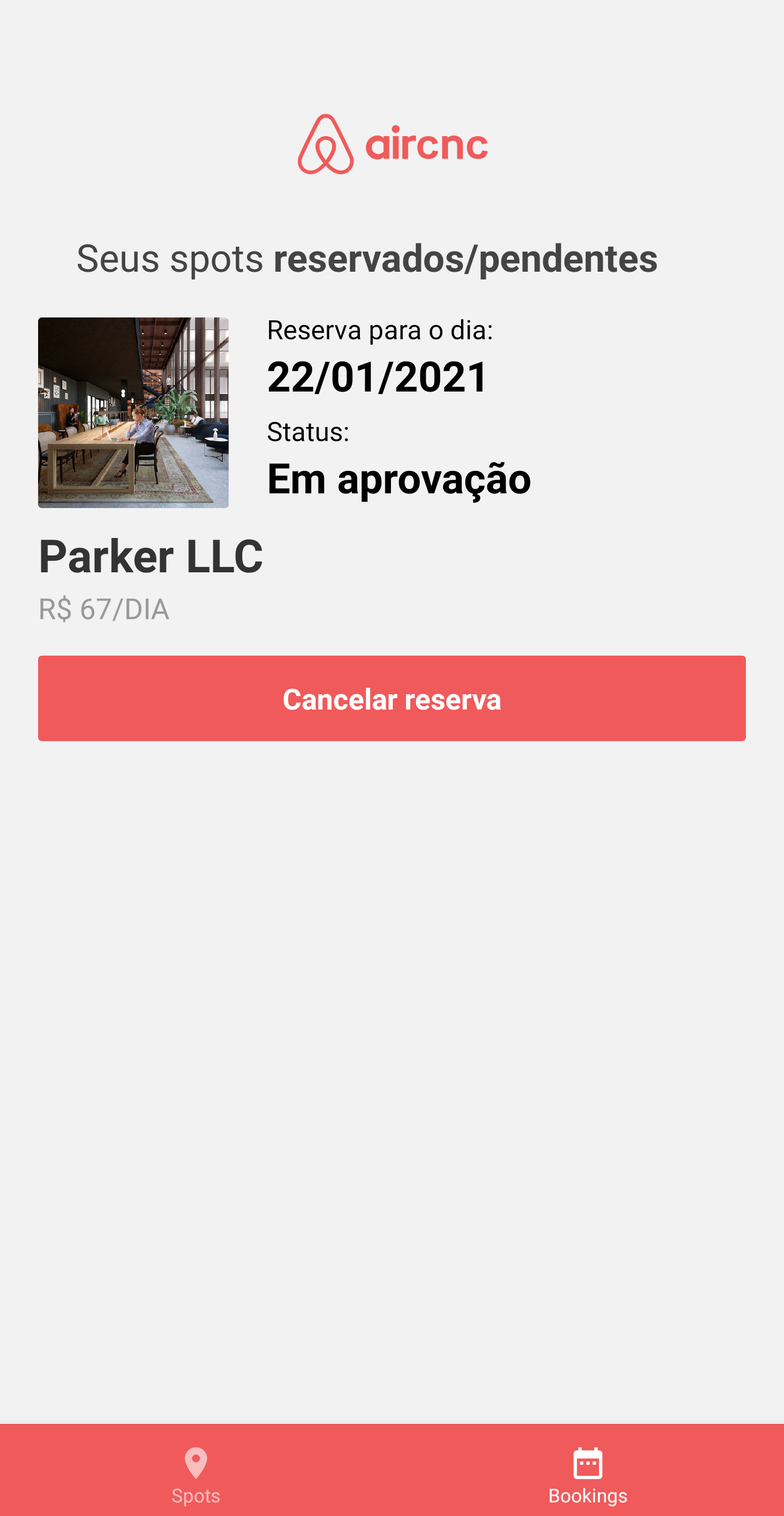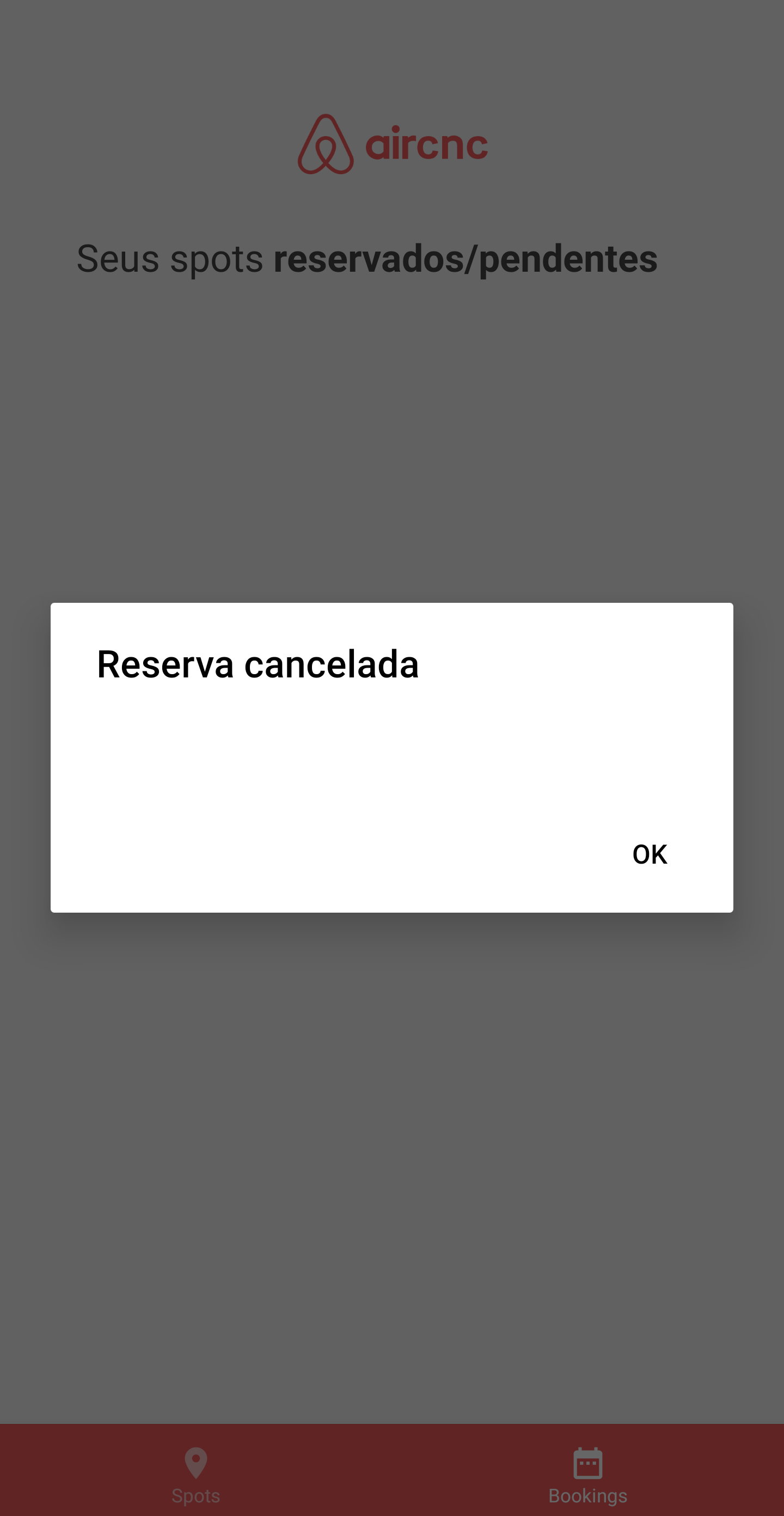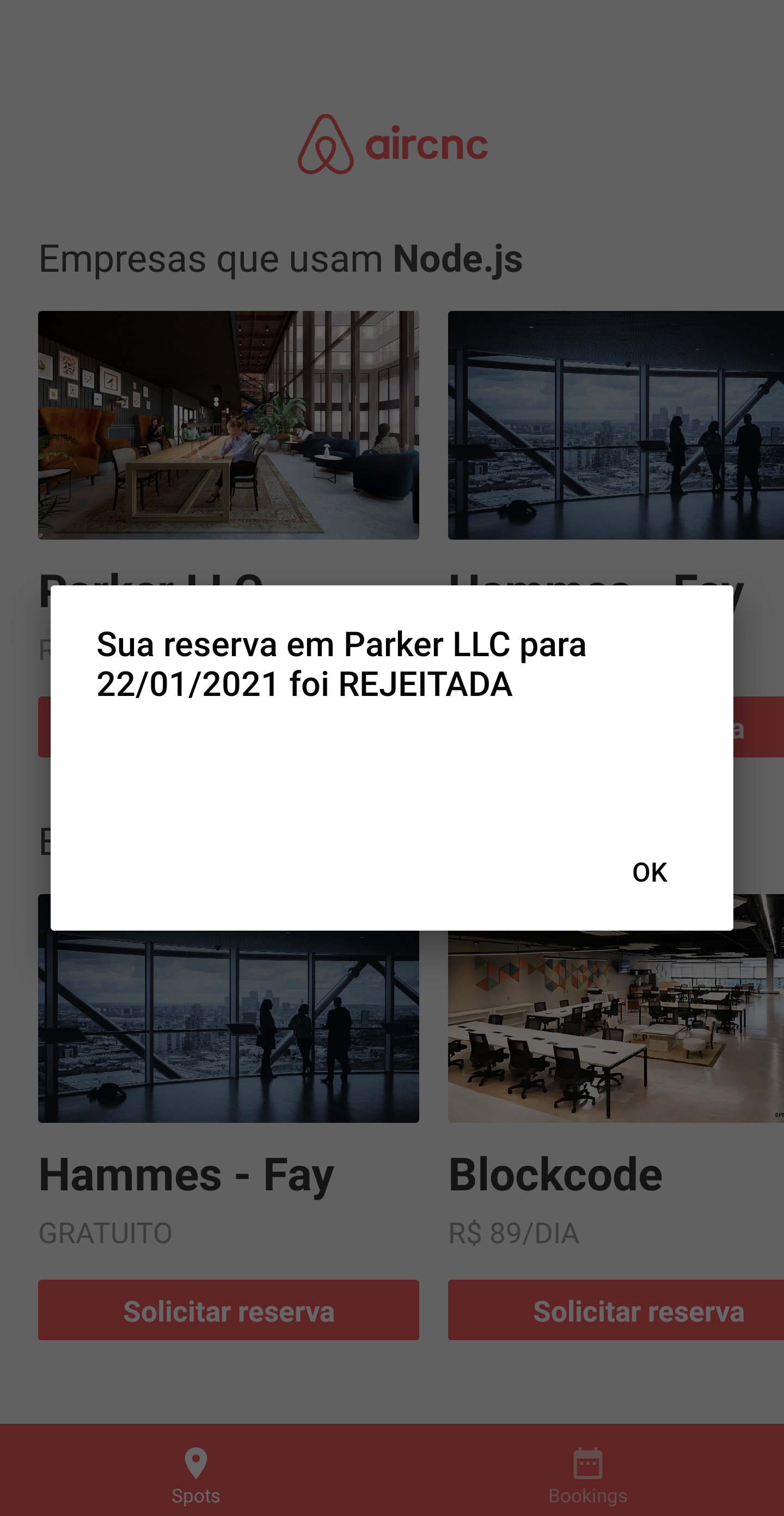This app allows to users to book spots from companies to a specified date, be notified when the request is approved or rejected and see all book requests made and its current status. All the resources used by this application comes from its API.
Easy peasy lemon squeezy:
$ yarn
Or:
$ npm install
Was installed and configured the
eslintandprettierto keep the code clean and patterned.
Configure your environment variables and remember to start the API before to start this app.
In this file you may configure the API's url. Rename the .env.example in the root directory to .env then just update with your settings.
| key | description | default |
|---|---|---|
| API_URL | API's url with version (v1) | http://localhost:3333/v1 |
| SOCKET_URL | Socket.io's url | http://localhost:3333 |
Start the API (see its README for more information). In case of any change in the API's port or host remember to update the .env's API_URL and SOCKET_URL properties too.
Also, maybe you need run reverse command to the API's port:
adb reverse tcp:3333 tcp:3333
The first build must be through USB connection, so connect your device (or just open your emulator) and run:
$ yarn android
Or:
$ npm run android
In the next times you can just run the Metro Bundler server:
$ yarn start
Or:
$ npm run start
This app was tested only with Android through USB connection and Genymotion (Emulator), is strongly recommended to use the same operational system, but of course you can use an emulator or a real device connected through wifi or USB.
Jest was the choice to test the app, to run:
$ yarn test
Or:
$ npm run test
You can see the coverage report inside tests/coverage. They are automatically created after the tests run.
















